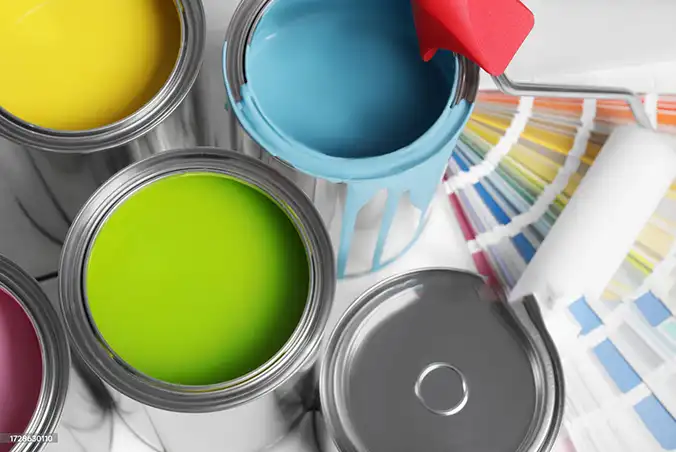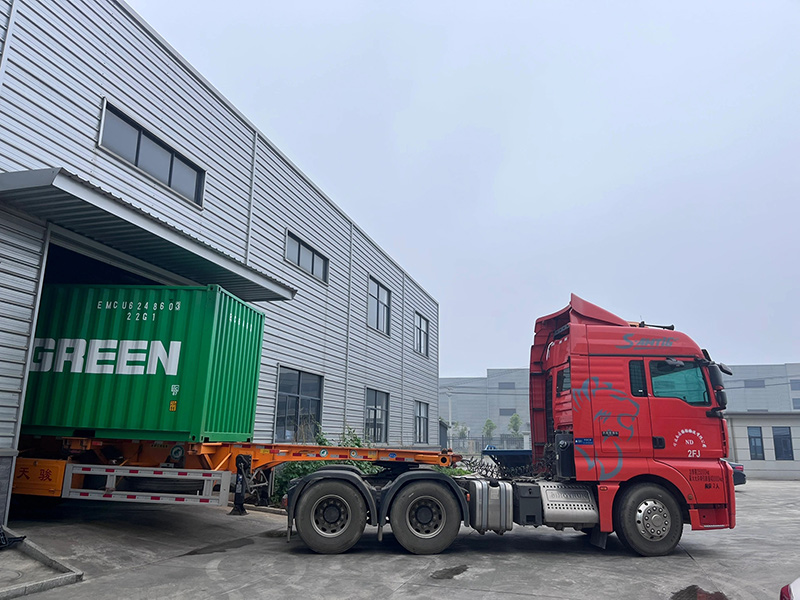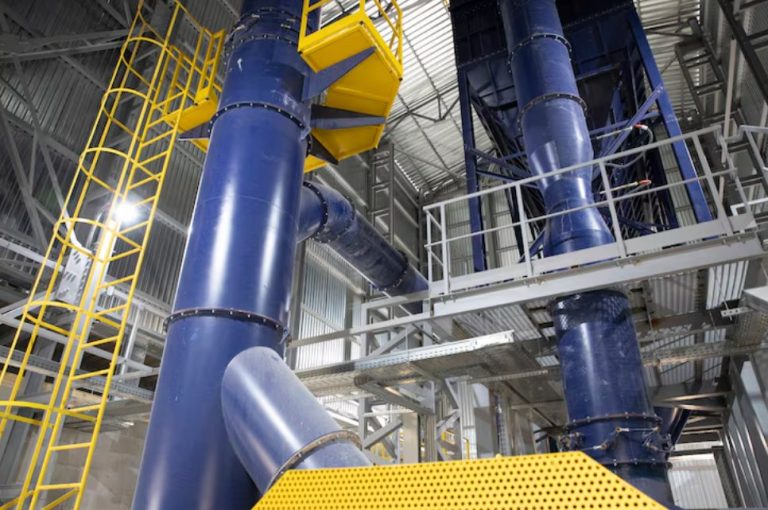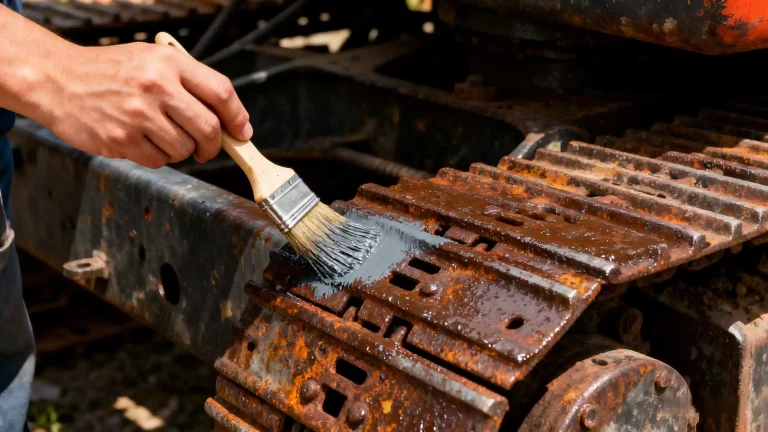
Hot settings create big problems for metal parts. This is especially true in fields like car making, factory production, and household goods. From car exhausts to backyard cookers, home fire features, and cooktop racks, metal faces intense heat, constant heating and cooling, and damaging factors. Without good shielding, these parts can rust, become weak, and break too soon. Heat Resistant Coatings are made to fight these troubles. They provide strong shielding against rust while keeping things looking good and working right. This blog will look at how Heat Resistant Coatings stop rust. We will also cover their special qualities, uses, and why they are vital for hot items like fire features, backyard cookers, and exhaust tubes.
Understanding Corrosion in High-Temperature Environments
Rust is the slow wearing away of materials, usually metals. This happens because of chemical reactions with their surroundings. In very hot places, like those in car exhaust setups, home fire features, or factory burners, rust happens faster due to:
Intense Heat: Temperatures from 800°F to over 1200°F weaken normal paints. This leaves the base metal open to air damage.
Heating and Cooling Cycles: Repeated warming and chilling cause swelling and shrinking. This strains paints and leads to breaks or flaking.
Outside Elements: Dampness, air, and rough bits (like exhaust fumes or ash) make rust worse. This is especially true for outside items like backyard cookers or warmers.
Chemical Changes: Great heat speeds up air damage. This forms rust or scale on bare metal areas.
Without enough shielding, parts like cooktop racks, heater parts, or bike exhaust tubes face shorter lives and safety worries. Heat Resistant Coatings are made just to handle these issues. They make sure things last a long time.
How Heat Resistant Coatings Prevent Corrosion
Heat Resistant Coatings use modern mixes, mainly silicone-based plastics, to create a shielding wall. This wall protects metal bases from rust. Below, we explain how these paints stop rust in hot places.
Silicone-Based Polymer Technology
The main part of Heat Resistant Coatings is silicone plastic (polysiloxane) materials. These offer much better heat handling than common paints like alkyd or epoxy. The Si-O link in silicone plastics has a link strength of 452 kJ/mol. This is far more than the 350 kJ/mol of carbon-carbon links in common paints. This lets Heat Resistant Coatings handle temperatures up to 800°C (1472°F) without breaking down. Important gains include:
Heat Steadiness: Silicone-based paints stay whole at extreme heat. They stop cracking or flaking that could let dampness and air reach the base metal.
Sunlight Handling: These paints resist damage from ultraviolet rays. This is key for outside items like backyard cookers or fire features in sunlight.
Linking During Setting: When set at high heat (like 280°C for 15 minutes), silicone plastic chains link up. This forms a tight, solid wall that blocks damaging elements.
Protection Against Oxidation and Moisture
Air damage is a main cause of rust in hot settings. Heat Resistant Coatings stop rust by:
Making a Shielding Layer: The paint covers the base metal. It stops direct touch with air, dampness, or damaging gases. For instance, in exhaust tubes, the paint shields against acidic exhaust fumes.
Zinc Additions: Some types include zinc. This gives self-sacrificing rust protection. If the paint gets scratched, zinc helps stop rust on the metal underneath.
Solid Surface: The linked structure ensures no tiny holes form. These holes could let water in and start rust.
Durability in Thermal Cycling
Parts like cooktop racks or heater parts go through frequent warming and cooling. Heat Resistant Coatings are made to stay bendy and stuck during heat swelling and shrinking. This stops:
Breaking or Flaking: Unlike common paints that lose grip above 250°F, Heat Resistant Coatings keep a strong hold on the base metal.
Strength: By stopping rust, these paints make sure parts stay strong. This lowers the chance of failure in important uses like car exhaust setups or factory warmers.
Aesthetic and Functional Longevity
For items like fire features and backyard cookers, looks matter as much as how they work. Heat Resistant Coatings offer:
No Color Change: Even at 800°C, these paints keep their color (usually black or silver because of few color choices). This keeps a neat look.
Easy Care: The tough, solid surface resists stains from soot, grease, or food bits. This makes cleaning easier for backyard cookers or cooktop racks.
Applications of Heat Resistant Coatings
Heat Resistant Coatings are needed in many fields, especially for parts facing great heat. Below are important uses:
| Application | Description |
| Automotive Exhaust Systems | Shields exhaust tubes, mufflers, and engine parts from rust caused by high heat and exhaust fumes. |
| Fireplaces | Makes sure fire feature areas resist heat, ash, and dampness while keeping a nice look. |
| BBQ Grills | Protects cookers from great heat, grease, and outside elements. This stops rust and makes them last longer. |
| Gas Stove Grates | Handles direct flame and heating-cooling cycles. This ensures strength and safety in kitchen settings. |
| Industrial Heaters | Shields parts like burner units and pipes in boilers or burners from rust and wear. |
| Motorcycle Exhaust Pipes | Guards against heat, road bits, and outside exposure. This keeps performance and looks good. |
These paints are also used in factory gear like burners, smoke stacks, and heat movers. Here, long-term rust handling is critical.
Why Choose Heat Resistant Coatings Over Standard Coatings?
Common plastic paints (like acrylic or epoxy) fail at temperatures as low as 250°F–300°F. They develop issues like:
Tiny Holes: Letting dampness in and causing rust.
Loss of Grip: Leading to flaking and showing the base metal.
Color Loss: Due to air damage, harming looks.
In contrast, Heat Resistant Coatings are made for extreme conditions. They offer:
Higher Heat Handling: Up to 800°C (1472°F) without breaking down.
Better Strength: Linked silicone structures give hardness, chemical handling, and sunlight steadiness.
Good Value: By stopping rust and making parts last longer, these paints cut care and replacement costs.
For example, a backyard cooker painted with a common type may show rust spots within months. However, one painted with a Heat Resistant Coating stays rust-free for years, even with heavy use.
About Foshan Konaz Technology Co., Ltd.

As a top supplier of Heat Resistant Coatings, Foshan Konaz Technology Co., Ltd. has been creating new things in this area for over 15 years. Located in Foshan, China, our 3,000-square-meter modern plant and 30+ advanced making units produce 1,000 tons of top-grade paints each year. Our Heat Resistant Coatings are made to handle direct flame up to 800°C. They offer no color change, no flaking, and long-lasting shielding for uses like car exhaust tubes, fire features, backyard cookers, and cooktop racks. With a promise to quality and earth care, our goods have won worldwide notice. They serve fields from cars to home machines. Konaz keeps leading the field through tech new ideas and answers focused on customer needs.
Conclusion
Heat Resistant Coatings are very important for shielding metal parts in hot settings. By using silicone-based plastics, these paints stop rust, handle heating-cooling cycles, and keep a nice look. This applies to items like fire features, backyard cookers, cooktop racks, and car exhaust setups. Their power to resist air damage, stick strongly, and survive extreme conditions makes them key for making gear last longer and cutting care costs. With trusted suppliers like Foshan Konaz Technology Co., Ltd., businesses and people can count on Heat Resistant Coatings for top performance and strength. Put money into these paints to guard your gear and make it last longer now.
FAQs About Heat Resistant Coatings
Can Heat Resistant Coatings be used on outside backyard cookers and fire features?
Yes, Heat Resistant Coatings are great for outside items like backyard cookers and fire features. Their sunlight-handling and solid qualities protect against dampness, heat, and outside elements. This stops rust and keeps looks good.
How long for Heat Resistant Coatings to set?
After putting on, Heat Resistant Coatings usually skin-set in 1–2 hours. They hard-set in 4–6 hours under normal settings (20–25°C, 40–60% dampness). Full setting, reaching top heat handling, takes 24–48 hours naturally. Or it takes 15 minutes when baked at 280°C.
How to clean areas painted with Heat Resistant Coatings?
For spots like backyard cookers or cooktop racks, use a soft, wet cloth or sponge with gentle cleaners (like dish soap) after cooling. Avoid rough tools or strong chemicals to keep the Heat Resistant Coatings whole.
Can Heat Resistant Coatings be fixed if harmed?
Yes, high-heat spray paints can be used to fix Heat Resistant Coatings. This brings back shielding and makes the part last longer. Make sure the area is clean and follow the advised setting steps.
Can Heat Resistant Coatings be applied to already rusted metal surfaces?
For best results, surfaces should be clean and free of rust before applying Heat Resistant Coatings. Light surface rust can often be removed with sanding or a rust converter, but heavily corroded metal may require thorough grinding or blasting. Proper surface prep (cleaning, degreasing, and roughening) ensures strong adhesion and long-lasting protection. Some coatings may include rust-inhibitive primers for added corrosion resistance on treated surfaces.










